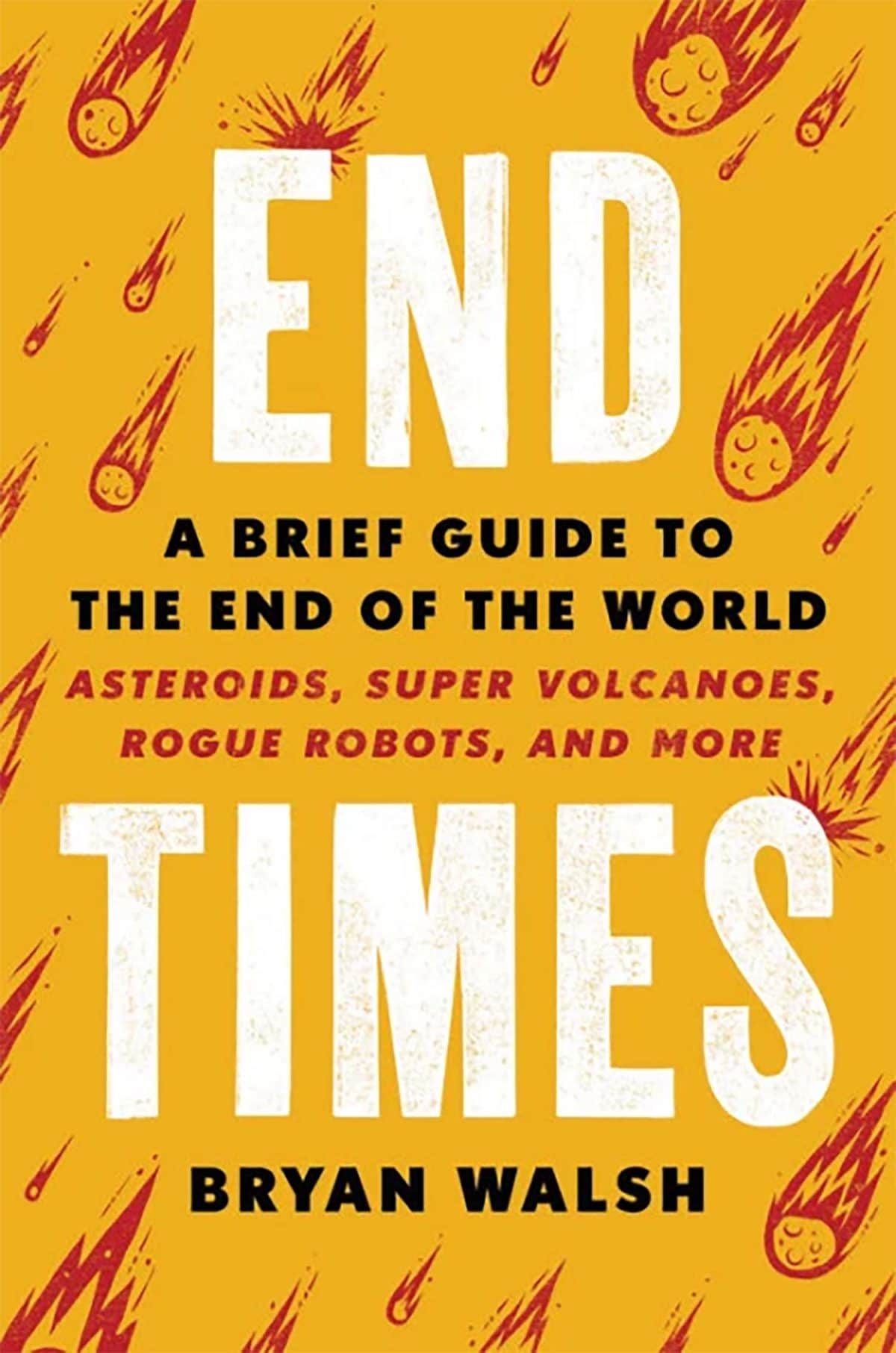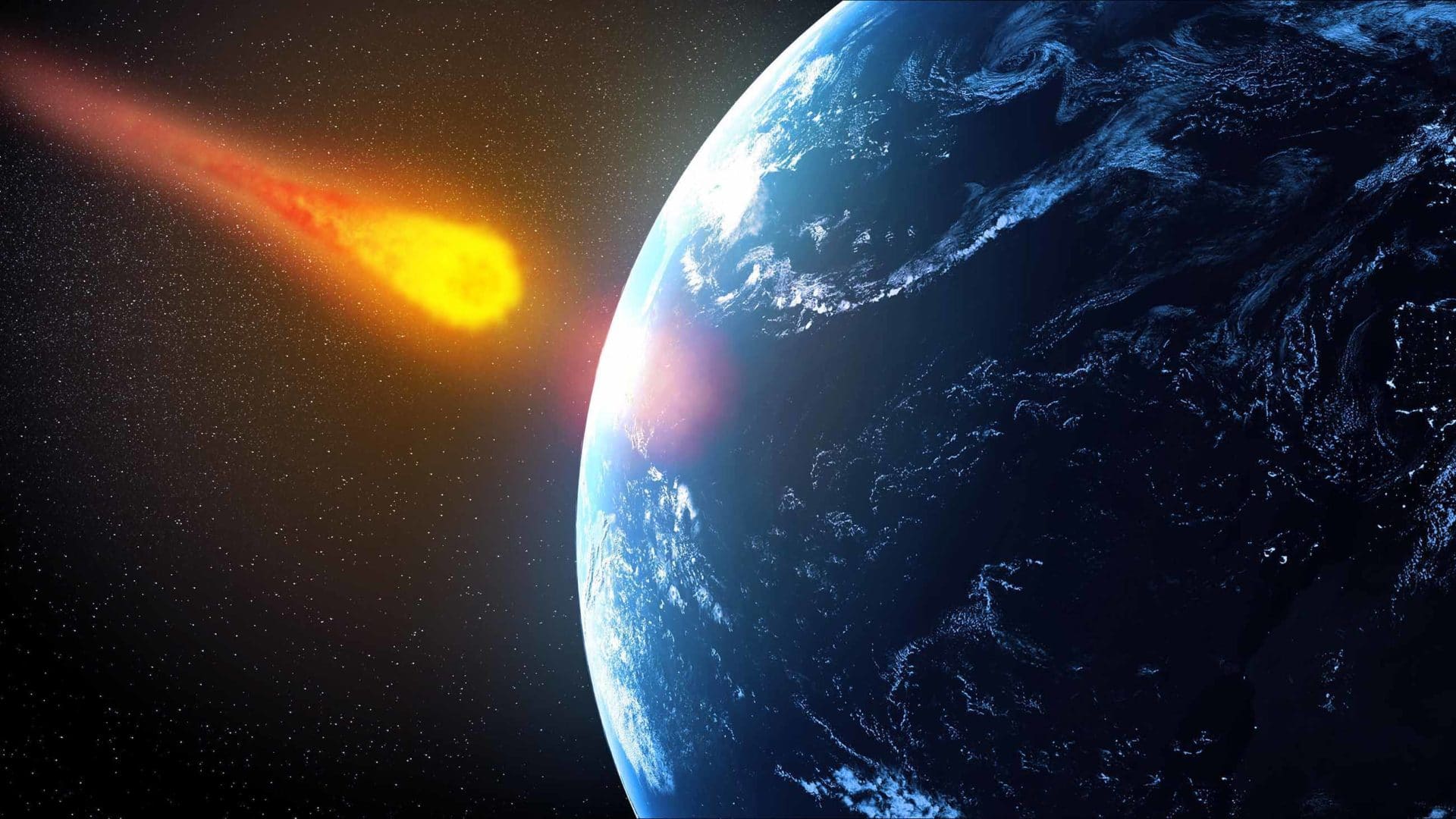I came to Trinity Site because I wanted to see the moment where the world changed forever. And it was a moment, a split second between a prehistory when human beings were passengers on this planet, and the era we live in still, the era of man-made existential risk. It happened here, on the predawn morning of July 16, 1945, when the scientists and soldiers of the Manhattan Project gathered to watch the first test of an atomic bomb.

WHAT I LEFT OUT is a recurring feature in which book authors are invited to share anecdotes and narratives that, for whatever reason, did not make it into their final manuscripts. In this installment, Bryan Walsh shares a story that was left out of “End Times: A Brief Guide to the End of the World,” published by Hachette Books.
At 20 minutes before ignition, physicist Samuel Allison began reading the countdown over a shortwave radio that had to be jiggered to life by Richard Feynman, one of the many scientists gathered that morning. Isaac Isidor Rabi, watching with his colleagues from the Manhattan Project, recalled the first fingers of dawn creeping over the east: “Those 10 seconds were the longest 10 seconds that I ever experienced. Suddenly, there was an enormous flash of light.”
What happened, as Richard Rhodes writes in “The Making of the Atomic Bomb,” was a nuclear chain reaction — “fission multiplying its prodigious energy release through 80 generations in millionths of a second” — such that for the briefest of instants the core of the bomb resembled the universe just after the Big Bang. The sheer power registered the equivalent of some 21,000 tons of TNT, more than 2,000 times bigger than the most destructive bombs in the U.S. arsenal at the time. And it was over in two seconds, perhaps the two most consequential seconds our species has ever experienced. With Trinity’s success, human beings experienced a state change.
Before Trinity, humans were vulnerable to extinction, but only from the kind of rare catastrophic natural disaster that had occurred a few times over our planet’s roughly 4.5-billion -year past. But after these two seconds on July 16, 1945, we could be authors of our own extinction, as one bomb led to more, and more still, until by the darkest days of the Cold War there were enough nuclear warheads at the ready to end human life as we knew it. In an instant.
Time is key to understanding existential risk — those dangers capable of curtailing human life. For threats from emerging technologies like A.I. or biotech, or from something like nuclear war, existential calamity can strike in a blink. But for natural existential threats, like asteroid impacts and supervolcanic eruptions, we need to think on a time scale far longer than human civilization, let alone human experience. So after witnessing a spot where history changed in a single moment, I wanted to visit a place formed by processes as slow as a fission reaction is swift.
Eighty miles from Trinity is the White Sands National Monument, one of America’s most astounding natural wonders, a sea of blindingly white sand. Some 250 million years ago, what is now southern New Mexico was covered by the shallow Permian Sea. Time passed — enough time to play out the history of Homo sapiens a thousand times over and more — and the sea evaporated, leaving behind a bed of gypsum that was raised through tectonic activity to become the San Andres and Sacramento Mountains that loom over White Sands.
More time passed, millions of years, and erosion broke down the gypsum, carrying it to the now landlocked Tularosa Basin. As the trapped water dried out, the gypsum on the surface was exposed in a crystalline form called selenite. What was left, after millions of more years and one last ice age, was the Alkali Flat, a prairie of selenite crystals. Day after relentless day — a countdown of a very different kind — broke the crystals into sand-sized particles, to be carried away by the prevailing winds from the Southwest. They accumulated in vast and ever-shifting dunes that now attract over half a million visitors a year.
While man-made existential threats work on an accelerating time frame, the natural threats that emerge from our planet and the cosmos it belongs to operate on a scale nearly as slow as the making of White Sands. There hasn’t been a globally catastrophic asteroid impact in tens of millions of years, and the last supervolcanic eruption was more than 25,000 years ago — three times the estimated lifespan of human civilization. And so we think, mistakenly, that we are safe.
Few of us are capable of grasping the sweep of Earth’s full, multibillion-year history. The deep past or the far future alike mean little against the handful of decades we may be fortunate to live. Confined to the brief time that surrounds us, we are blind to all that has come before, or could follow us after we’re gone. “A lot of things happen on geologic time scales that we don’t see in an average lifespan,” Jake Lowenstern, a geologist with the U.S. Geological Survey, told me. “There’s stuff out there that doesn’t happen very often, and civilization has happened within that window.”
Just because we haven’t experienced a global catastrophe — an asteroid impact or a supervolcanic eruption — doesn’t mean one doesn’t lay in our future. We assume that the peaceful, stable 10,000 years or so during which human civilization has developed is the norm, but 10,000 years is barely more than 0.0002 percent of the full history of the Earth, or just one minute out of a full day. What we think is normal and eternal is just our experience, and to protect ourselves from the worst that could come, we need to see beyond that experience. We need to see the full scope of the past like a geologist, and the future like a physicist. These are the lessons of White Sands and Trinity.
One of Trinity’s descendants, a modern intercontinental ballistic missile, can travel from Russia to the U.S. in just about 30 minutes, and new hypersonic missiles being developed by both sides will be even faster. Breakthroughs in biotechnology will make it increasingly easy to engineer pathogens more lethal and more contagious than anything that can be found in nature — and it might take only one mistake, or one malevolent act, to release them upon the world. As A.I. grows in power and complexity, some experts worry it could pass without warning beyond an event horizon, leading to an intelligence explosion that would surpass us mere organic beings almost as rapidly as the unfolding of a nuclear chain reaction
We are not made for this speed. From social media to A.I. weapons, we find ourselves overtaken by our own creations, unable to adjust to the world we’ve brought into being. This is why humanity is in greater existential peril than ever before. We can’t react fast enough, can’t get ahead of events. We don’t know where we are on the countdown of existential risk, but we know the numbers are falling. Born to run at a slower pace, we risk being overtaken by the end. Trinity may have been over in a second, but its shockwaves are still spreading.
The temptation, then, is to accelerate, to try to match the speed of these growing threats. We may have little alternative. In a world of around 7.7 billion people, there’s seems to be no way to slow down, even if we knew how. That’s another lesson from Trinity: a countdown can’t be wound back. We need to be nimbler as a species, and we need to be wiser — at least as wise as we’ve become powerful. We’re past the days when we could learn by trial and error.
Yet to do that, to counter these risks that grow so swiftly, we also need to comprehend time in a different way. Pinned to the present, human beings are rarely capable of thinking more than a few years ahead, perhaps a few decades for the truly farseeing. In addition to these fast-moving technological risks, however, we still face natural threats that operate at the pace of White Sands, time scales so vast that the entire history of human civilization amounts to a mayfly’s life by comparison. To survive the era of existential risk, we must move fast, while thinking very, very slow.
Bryan Walsh is the editor of the science and technology publication OneZero. His work has appeared in TIME magazine, Newsweek, The New York Times, MIT Technology Review, and other publications.











Comments are automatically closed one year after article publication. Archived comments are below.
0.0002 percent of a full day is 0.0029 minutes not one – 0.0002 percent of a full year is OK
Nit-pick. Hypersonic missiles are NOT faster than ICBMs. For one thing, they’re not missiles. A missile typically acquires most of its velocity at launch (e.g., yes, an arrow is a missile). Except for the MIRV innovation in the 1960s, which provided some steering upon re-entry, ICBMs have to be precisely aimed, since relatively little “steering” is done during flight. ICBMs, in other words, follow a ballistic trajectory, and the mathematical analysis of their trajectories is, yes, ballistics. The trajectory of a hypersonic vehicle is analyzed almost entirely by equations of aerodynamics (hence the -sonic element). It requires some atmosphere to operate. It will not stray too much into vacuum, since that would complicate its design, and would compromise its raison d’etre of “flying below the radar” that is looking for ICBMs, which DO fly above the atmosphere. ICBMs have to, since if they flew through the atmosphere at their typical velocity they would burn up. Hypersonic vehicles are not “superior” weapons to ICBMs; the two have separate advantages and disadvantages. One of the disadvantages of hypersonic vehicles versus ICBMs is that the former is … slower.
I realize none of this vitiates the main point of the article, but since this does seem to be a science site …
A major difference between the development of biotechnology and AI is that only in biotechnology were there ethical conferences with every biotechnology conference. It was even federal government sponsored at that time.
Around AI, there is not the same level of skepticism and importance of ethical considerations.